 Mold Exposure? Signs of Mold Growth & Health Risks of Indoor Mold
Mold Exposure? Signs of Mold Growth & Health Risks of Indoor Mold
Have you ever been affected by mold? Mold, especially indoor mold exposure is a major health issue that can affect many people and have varying health effects from person to person. Mold is a naturally occurring part of the environment that can travel and spread from different environments including your indoor living space or home. It spreads and grows by releasing mold spores into the air that will begin to travel throughout close by areas, therefore impacting a number of different environments.
In recent years, attention has been gathered on the increased concern of human health and its correlation with mold inside your home & workplace. Mold is estimated to cover about 25% of the world’s biomass, with about 100,000 fungal species of mold identified (1). Therefore, mold exposure is a likely occurrence that could take place in your home that could significantly impact your health.
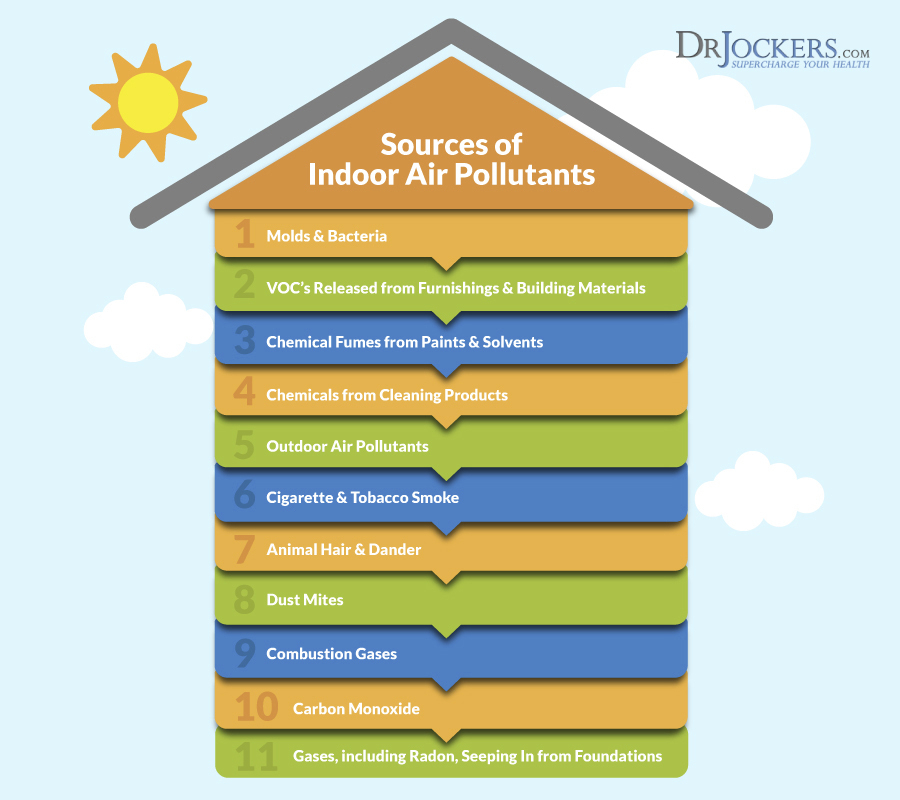
Mold Exposure and Health
Mold can elicit ill health effects by three major methods: allergy, toxicity, and infection. Allergies are likely to occur as 70 allergens have been found in spores of mold fungi. These allergens can then result in bouts of allergy symptoms that will plague someone almost every day who is exposed to the environment where the mold allergen is hosted, such as your home.
Mold toxicity occurs due to the production of toxic chemicals from mold called mycotoxins. Mycotoxins can produce adverse health effects described as chronic effects from the long-term exposure of mycotoxins in the environment (2). Lastly, mold infection can occur in fungi such as Candida, Histoplasmosis, Cryptococcus, Blastomyces, and Coccidiosis which can infect people. These molds can cause minor skin infections and other infections upon exposure.
All three of these potential mold inducing health effects can have significant impacts on the health of those exposed, therefore learning key signs to mold growth in your home as well as health effects signs that you have been exposed to mold could help you in mitigating mold from your home quickly and efficiently.
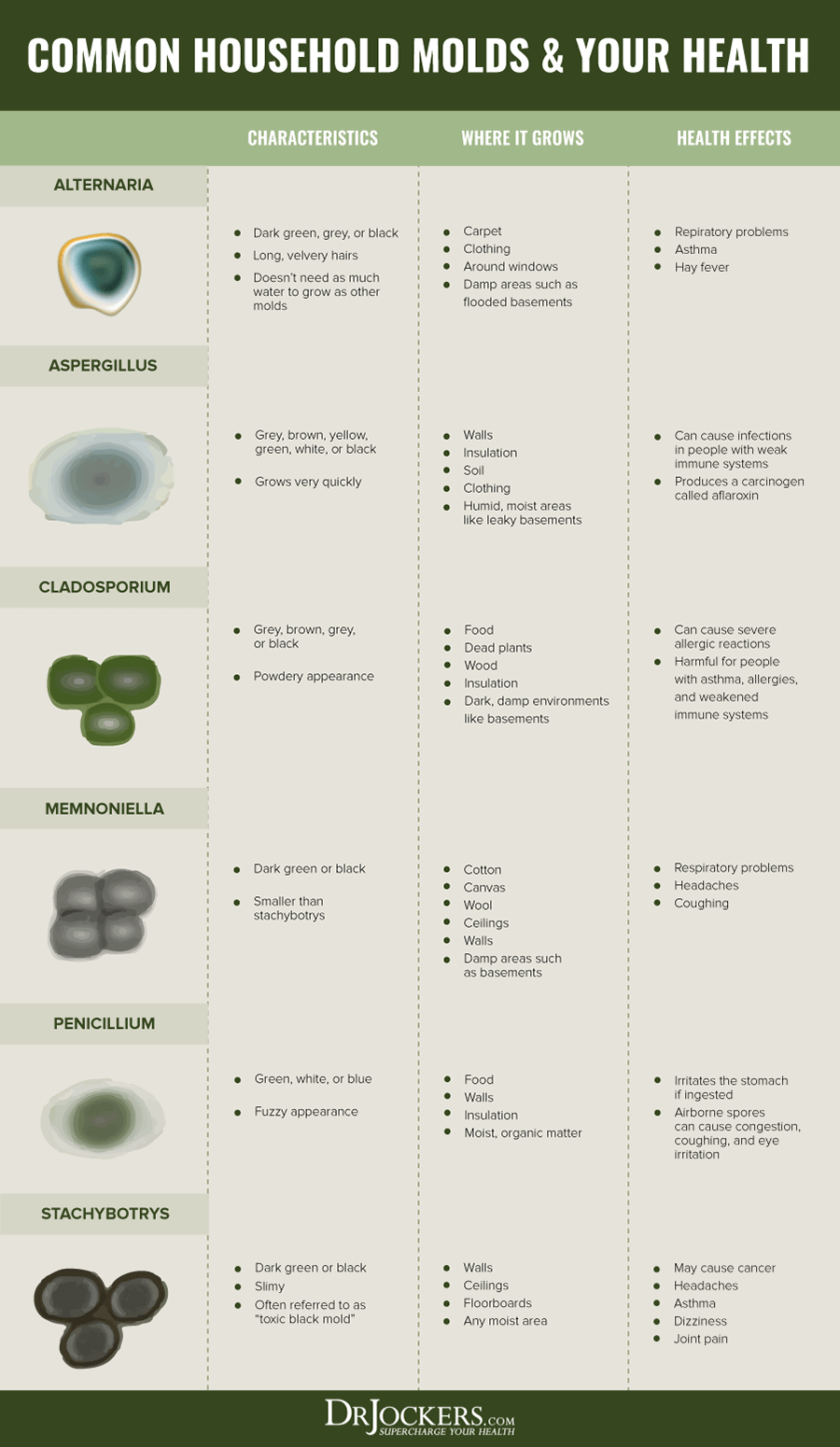
Mold Growth Signs in Your Home
Indoor moisture and mold growth a significant issues in public health, as indoor mold exposure will lead to an array of possible health conditions. A number of studies have been reported to better understand the relationship of indoor moisture and mold growth with health conditions such as allergies and respiratory illness (3).
The key to reducing any and all exposure to indoor mold is being hyper-aware of the signs of mold growth in your home. Mold is not always easy to spot, but being attentive to the main indicators of mold growth in your living space will give you the power to quickly remove the potential health hazard. You can also get a detailed home mold test here
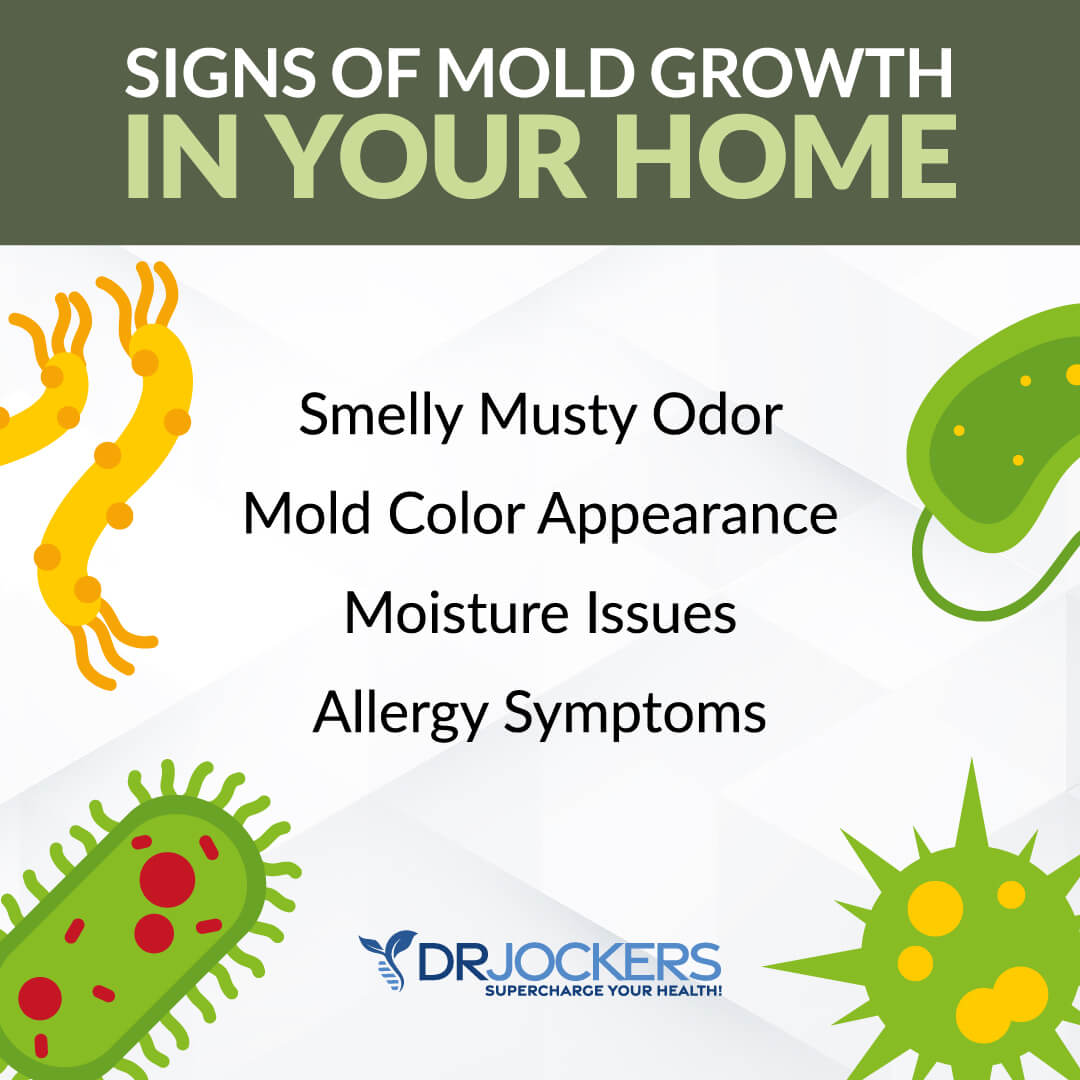
Smelly Musty Odor
Mold is typically associated with an often-musty odor that can leave its mark on your home. Usually, the musty odor in your home is the first sign of a mold problem in your environment. The odor that mold releases is caused by microbial volatile organic compounds (mVOCs).
These microbial organic compounds are gasses produced by mold that lead to the odorous smell of mold. At the first detection of this musty odor in your environment, be sure to properly assess the area for potential water leaks, moisture, or color growth on the surfaces of your wall.
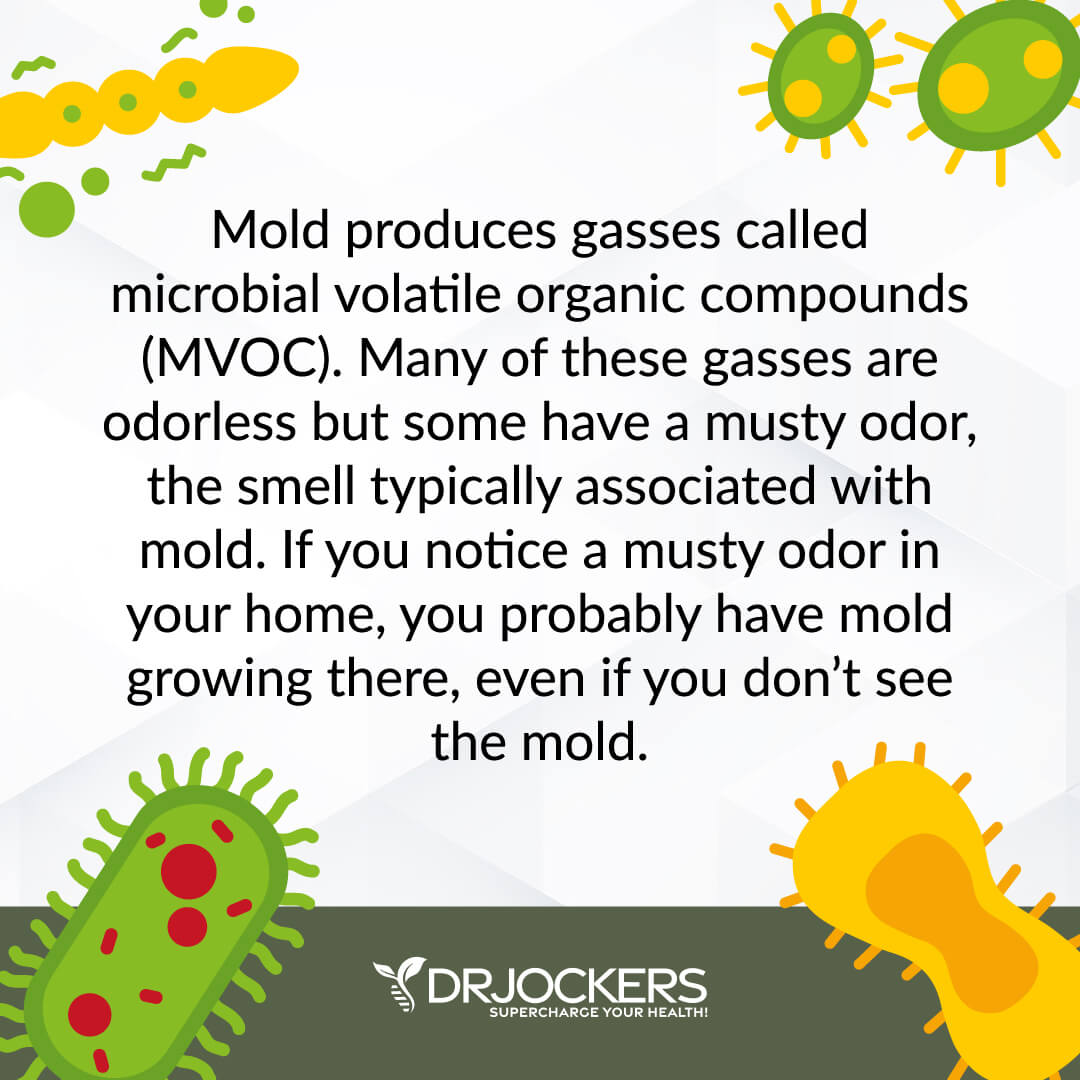
Mold Color Appearance
Mold comes in all different color variations which can be a major indicator of mold growth in your environment, especially when a color develops on your walls and surfaces. Why does mold come in so many color variations? The numerous color variations produced by mold and other fungi can range regionally says a researcher at Oregon State University, Sara Robinson (4).
The main color variations that are present in most household molds are usually blackish, greenish, brownish, white, and orange-red colors. The color of mold can also indicate the level of hazard contained in each mold species.
Black mold called Stachybotrys Chartarum is one of the most dangerous mold species that can harbor a whole host of negative health effects for humans. Therefore, observe your environment for potential color changes in the surfaces of your indoor living space.

Moisture Issues
There are many types of mold, but none of these molds would be able to grow without water or moisture. A water leak, moisture build-up, or even poor ventilation can lead to the ideal environment for mold to grow. If you have water or moisture in an area in your environment be sure to completely clean the spot and remove all excess water.
Mold works slowly by steadily destroying whatever it grows on, therefore preventing moisture build-up in your environment will help to reduce potential mold exposure in your home (5).
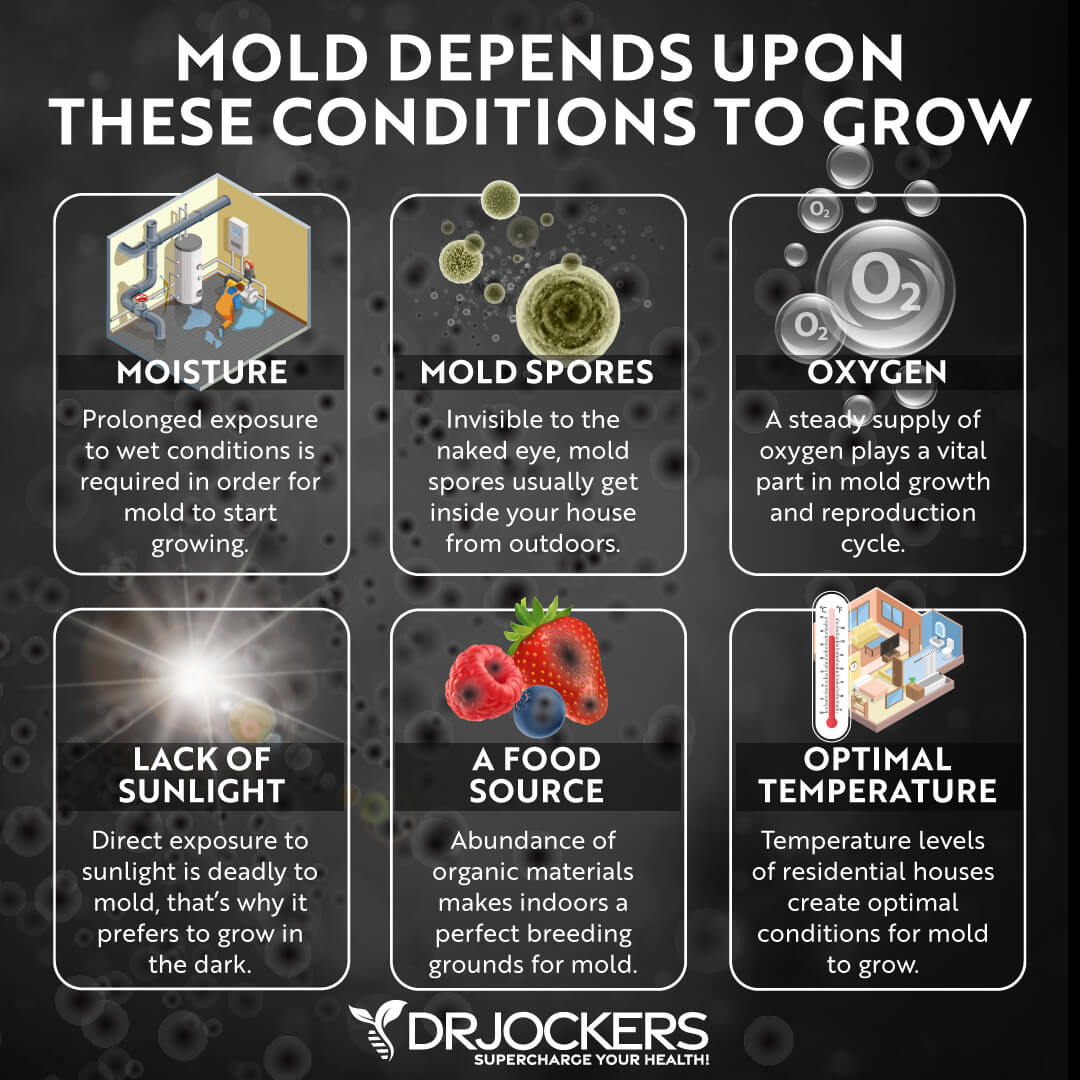
Allergy Symptoms
Fungi (mold) in your indoor environment are considered an active component in the development of allergic airway disease (allergies) and respiratory symptoms. If you start to experience frequent allergy-like symptoms in your indoor environment mold could be the root cause to these flares.
Symptoms could range from wheezing, coughing, sneezing, fatigue, or congestion. Mold exposure may also result in mold sickness which can lead to an exacerbation of these symptoms.

Health Effects of Mold Exposure
Sensitivity to mold can occur, which can lead to a potential susceptibility to other health effects upon exposure. People with a specific mold allergy can have more of a severe reaction to mold exposure. Whereas others may experience less severe symptoms.
The symptoms and severity can vary but when exposed to mold in your indoor environment you are likely to experience any of the symptoms listed below:
- Nose Bleeds
- Skin Infections
- Rashes
- Fatigue
- Aches & Pains
- Eye Irritation
- Allergic Bronchopulmonary Aspergillosis
- Chronic Sinus Problems
- Throat Pain
- Or Mold-Induced Asthma
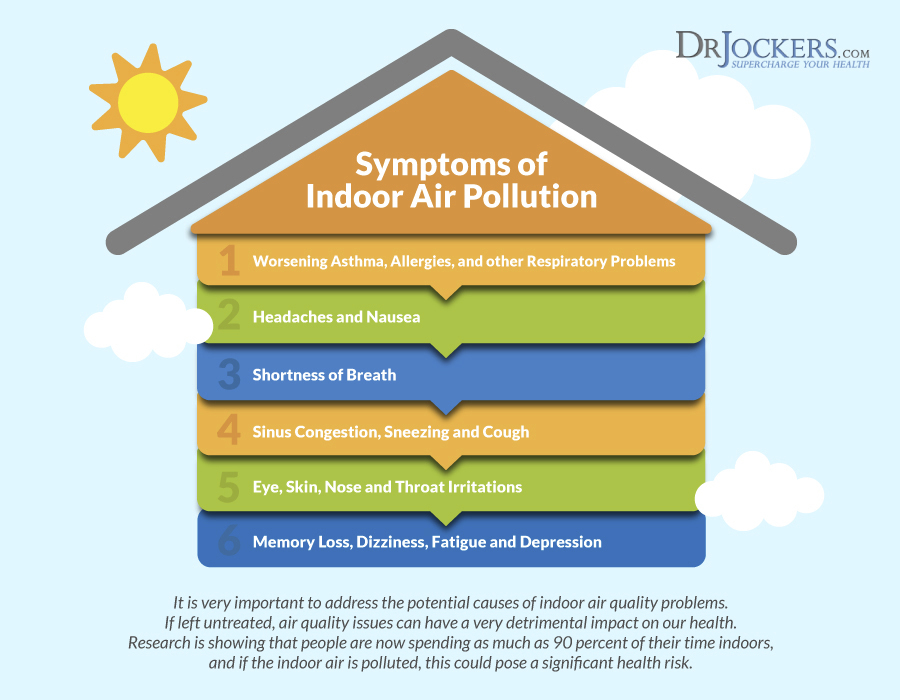
How to Get Rid of Mold in House
Depending on the size of the mold problem, you may need to call in some reinforcement. If the mold area is less than about 10 square feet then you can most likely handle the job by yourself. However, if the mold area is larger than that you will need to have a mold remediation specialist come to mitigate the mold from the area (6).
For self-removal of mold, methods of removal such as bleach, borax, vinegar, ammonia, hydrogen peroxide, and baking soda can be used on the mold area. These solutions will help to mitigate mold on the surface, but unfortunately, will not mitigate mold spores from the air. Spores in the air can adversely affect your indoor air quality (IAQ) and your health.
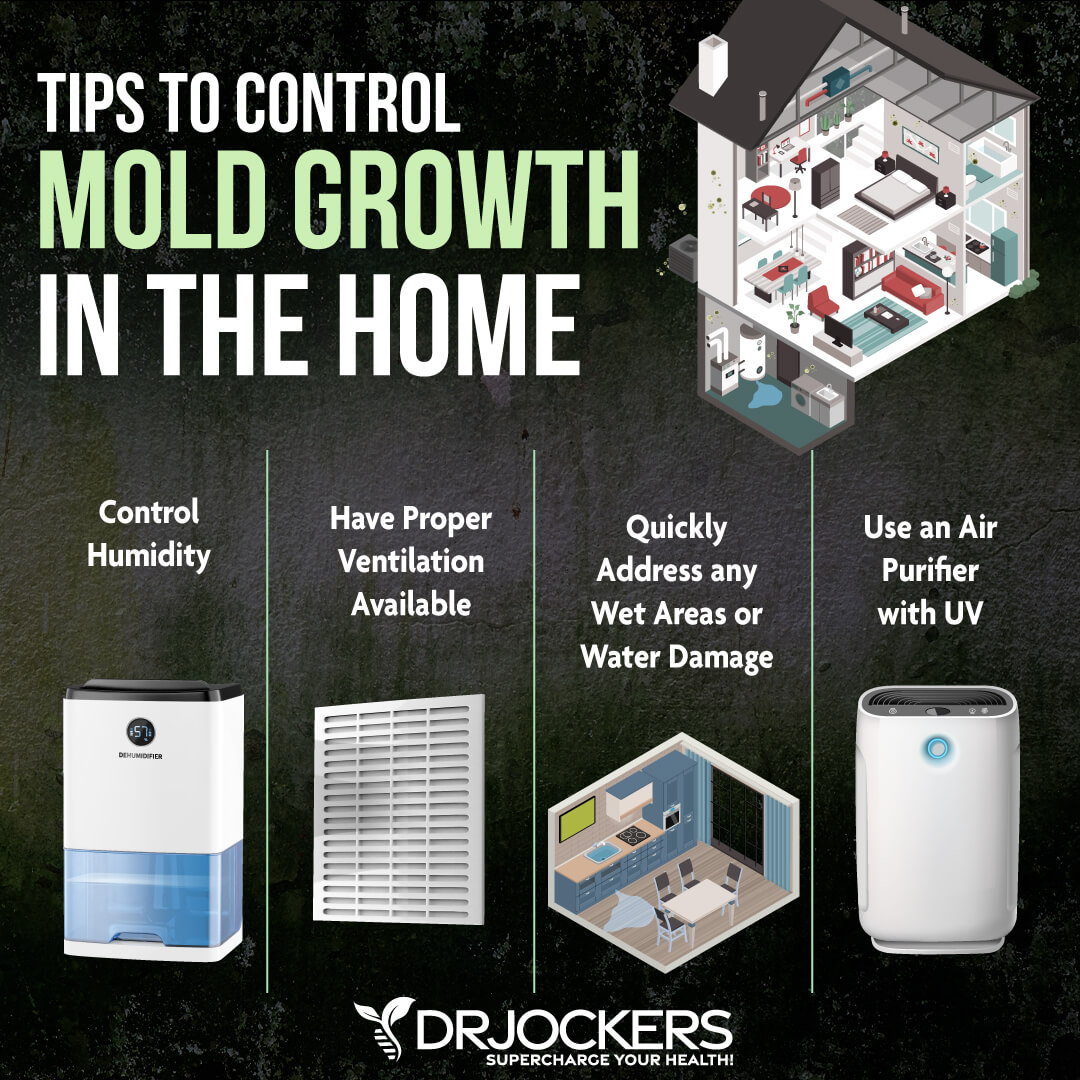
Mold Spores in the Air
Mold spores are small particulate matter that can be easily inhaled through the airways and impact overall health. Thus, mitigating these small particulate matters from your air is critical to health. The best method to implement in the removal of airborne mold spores is with an effective UV air purifier.
The EnviroKlenz Mobile UV Air System is the ideal air purifier for mold spore elimination from your air. The EnviroKlenz UV System utilizes an advanced technology that is highly reactive against a broad spectrum of chemicals and odors, with the added protection of UVC lights to eliminate microorganisms such as bacteria, viruses, and mold spores.
Ensure that your home is rid of mold from surfaces and air by monitoring for tell-tale signs of mold growth and with mitigation methods to eliminate mold and mold spores from the environment.
Functional Testing for Mold Exposure
It is one thing to get mold out of your home and the air you breathe. If mold has been present in your environment for some time, then it is likely in your body in the form of mycotoxins. These toxins can promote yeast or fungal infections and cause all kinds of inflammation. Brain fog and mood disorders are common as well.
The best test that currently exists for determining if mold exposure is stressing your body is the GPL-MycoTOX Profile. This particular lab screens for 7 different mold toxins that are key indicators of four different common species of mold. This is all from a simple urine sample that is collected in the comfort of your own home.
Detoxifying Mold from The Body
So you’ve run a mycotoxin profile and you found you are full of mold toxins. Or perhaps you know you’ve been exposed to mold and don’t want to give it a chance to cause any problems. There are reliable methods of supporting the body’s ability to get rid of these things.
First and foremost, you must hydrate very well on a regular basis and consume a clean diet full of detoxifying herbs and vegetables. The video below explains some of the best strategies to support your body’s detoxification systems. These include things like infrared sauna, fasting, and exercise to circulate lymphatics.
There are also advanced supplementation strategies that can be great for reducing mold toxins in the body. The following is what I would recommend for doing so:
ThyroLiver Protect: A combination of selenium, milk thistle extract, Alpha-Lipoic Acid, and N-Acetyl-L-Cysteine. This combination assists liver detoxification while supporting the production of glutathione. Taking 1–2 caps, 2 times daily helps your liver neutralize and process the mold spores.
Super Glutathione: For tough cases, extra glutathione can be necessary. This is an acetylated form that can be absorbed by the digestive tract, unlike many others on the market. I recommend 1–2 caps – 2 times daily. This is especially important if you are suffering from a lot of symptoms from mold exposure.
Activated Charcoal: When detoxification systems are upregulated, many toxins are released into the digestive tract. If they are not bound by something like charcoal, they are given the opportunity to reabsorb and cause more problems. Using 1–2 caps of charcoal between meals and immediately before bed is a great strategy.
BioToxin Binder: This product contains a special form of carbon that has a greater binding ability. It also contains wild-crafted yucca root and fulvic acid. It’s formulated specifically to support binding biotoxins like mold, ammonia, and aldehyde systemically. Take 1–2 caps – 2 times daily.
If you want to work with a functional health coach, I recommend this article with tips on how to find a great coach. On our website, we offer long-distance functional health coaching programs. For further support with your health goals, just reach out and our fantastic coaches are here to support your journey.
Inflammation Crushing Ebundle
The Inflammation Crushing Ebundle is designed to help you improve your brain, liver, immune system and discover the healing strategies, foods and recipes to burn fat, reduce inflammation and Thrive in Life!
As a doctor of natural medicine, I have spent the past 20 years studying the best healing strategies and worked with hundreds of coaching clients, helping them overcome chronic health conditions and optimize their overall health.
In our Inflammation Crushing Ebundle, I have put together my very best strategies to reduce inflammation and optimize your healing potential. Take a look at what you will get inside these valuable guides below!









Hello Dr J,
Can a 8 year old kid that weighs 75 lbs take the Biotoxin binder? She has been suffering from a chonic headache, all labs and MRI are normal. I’m suspecting a mold exposure from our bathroom shower.
Yes she can as long as she can swallow the pill. I would recommend adding in the Mito ATP – do 4 drops – 3x daily.
MitoATP: https://store.drjockers.com/products/mitoatp
Use the coupon code Jockers10 to save 10% off on these products.